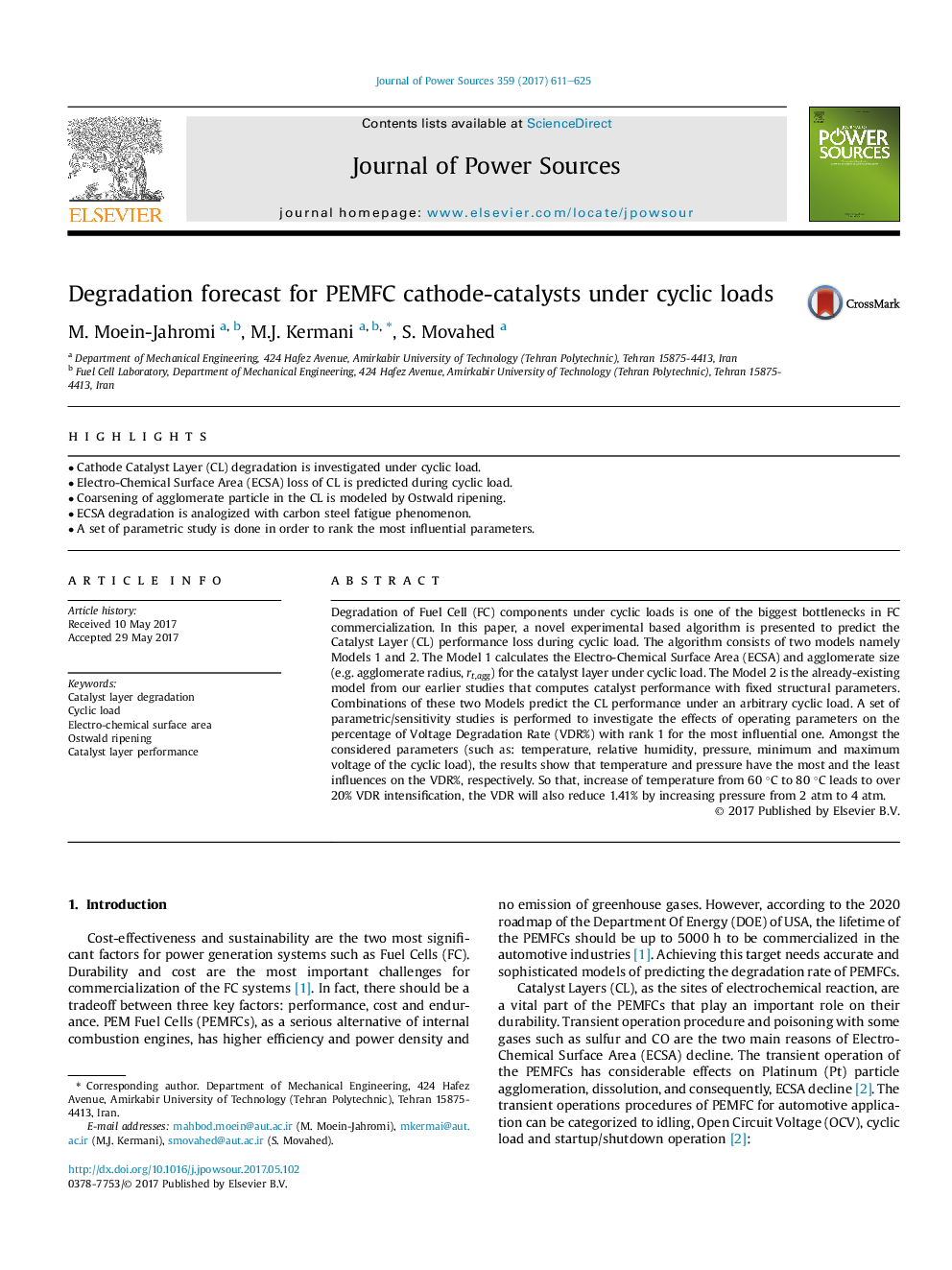| Article ID | Journal | Published Year | Pages | File Type |
|---|---|---|---|---|
| 5149074 | Journal of Power Sources | 2017 | 15 Pages |
Abstract
Degradation of Fuel Cell (FC) components under cyclic loads is one of the biggest bottlenecks in FC commercialization. In this paper, a novel experimental based algorithm is presented to predict the Catalyst Layer (CL) performance loss during cyclic load. The algorithm consists of two models namely Models 1 and 2. The Model 1 calculates the Electro-Chemical Surface Area (ECSA) and agglomerate size (e.g. agglomerate radius, rt,agg) for the catalyst layer under cyclic load. The Model 2 is the already-existing model from our earlier studies that computes catalyst performance with fixed structural parameters. Combinations of these two Models predict the CL performance under an arbitrary cyclic load. A set of parametric/sensitivity studies is performed to investigate the effects of operating parameters on the percentage of Voltage Degradation Rate (VDR%) with rank 1 for the most influential one. Amongst the considered parameters (such as: temperature, relative humidity, pressure, minimum and maximum voltage of the cyclic load), the results show that temperature and pressure have the most and the least influences on the VDR%, respectively. So that, increase of temperature from 60 °C to 80 °C leads to over 20% VDR intensification, the VDR will also reduce 1.41% by increasing pressure from 2 atm to 4 atm.
Keywords
Related Topics
Physical Sciences and Engineering
Chemistry
Electrochemistry
Authors
M. Moein-Jahromi, M.J. Kermani, S. Movahed,
